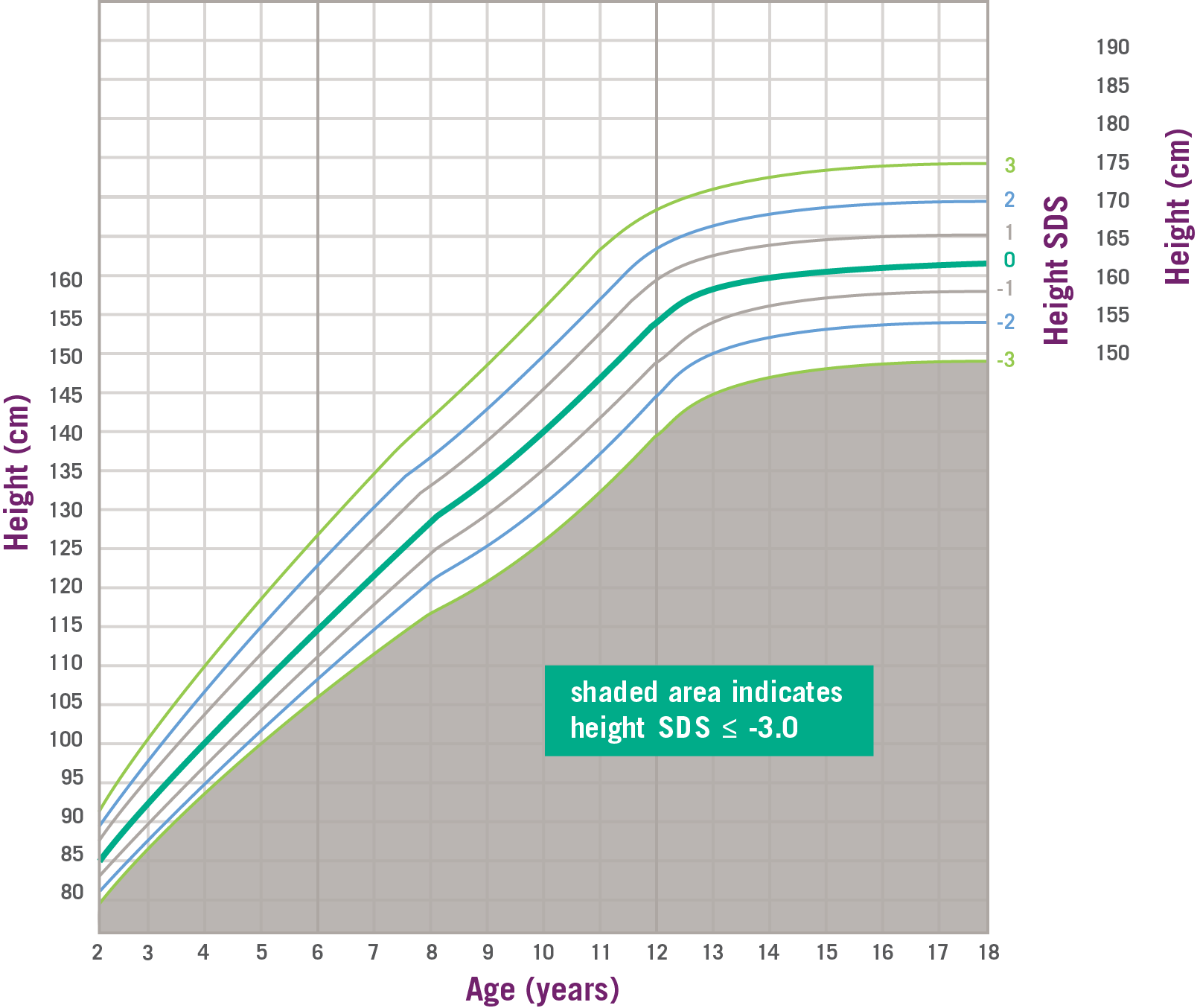IGF-1 is Vital for Growth
IGF-1 is Vital for Growth
IGF-1 Is Vital for Growth
IGF-1 is a naturally occurring hormone that is vital in promoting growth. If your child is diagnosed with short stature and the cause is not known (idiopathic) or they do not show improvement after receiving growth hormone therapy they may have a lack of IGF-1 (Insulin-like Growth Factor deficiency).
Importantly, if your child’s IGF-1 levels are very low (i.e., severe) but their growth hormone levels are normal or even elevated, this could be the main reason why they are shorter than almost all other children of the same age and gender. Your child may have Severe Primary IGF-1 Deficiency or SPIGFD.
Diagnosing and Testing
Diagnosing and Testing
Diagnosing and Testing
Some of the tests that may be used to evaluate a child with short stature are described in this section. Click on the link below to read a detailed description of each.
History and examination
History and examination
History and Examination
Often, one of the first steps in trying to find out why a child is shorter than expected for their age is for the doctor to take a medical history and perform a physical examination.
Your doctor may ask about your child’s and family’s health history. They may also ask you how much and how fast your child has grown in the past; if your child has received any particular medications that might have affected their growth; and other questions to help rule out any other conditions.
Your child’s height and weight will likely be measured.
Growth assessment
Growth assessment
Growth Assessment
A growth chart may be used to determine your child’s growth. Growth charts are one of the tools that doctors can use to see if a child is growing as expected for their age and gender. There are different charts for boys and girls and also charts that help assess a child’s growth related to both their height and weight.
An example of a growth chart can be seen below. In this example, the expected average height is shown as a solid dark green line. Heights above and below this average are given a number to show how much they vary from the average height. This difference is called standard deviation.
Growth Charts Can Help Diagnose Severe Primary IGF-1 Deficiency
*SDS, standard deviation score. Data and formula from
Centers for Disease Control and Prevention.
In addition to measuring your child’s height, parents’ height may also be recorded.
This measurement is used to help doctors calculate what a child's expected height could be. While it's helpful to regularly measure your child's height at home, having measurements taken at the doctor's office may provide more consistent results.
Height velocity
Height velocity
Height Velocity
The speed at which your child is growing is known as the height velocity. This can be calculated by measuring your child’s height at regular intervals over a fixed time frame. Knowing a child’s height velocity can help a doctor determine if your child is growing at an expected rate.
IGF-1 blood test
IGF-1 blood test
IGF-1 Blood Test
If your doctor suspects your child has a growth disorder, a blood sample is likely to be taken and sent to a laboratory to measure levels of important hormones that influence growth, such as growth hormone and IGF-1.
If initial results show that there are low levels of growth hormone your doctor may suggest beginning treatment to increase the levels of this hormone. If your child is still not growing as expected, your doctor may also measure levels of IGF-1 in the blood to see if they may need to be supplemented. If IGF-1 treatment is considered, then IGF-1 levels may need to be measured periodically.
GH Stimulation Test
GH Stimulation Test
GH Stimulation Test
If tests show that IGF-1 levels are indeed low, a Growth Hormone (GH) stimulation test may be performed next, to see if your child has Severe Primary IGF-1 Deficiency.
A GH stimulation test will take place in the doctor’s office and your child will be given a medicine (usually by injection) that will stimulate their body to produce GH. Blood samples will be taken at regular intervals during this test. The samples will be sent to a laboratory for analysis and the results will let the doctor know how much GH your child released during the course of the test. Their results can then be compared to what would be expected for other children their age.
Severe Primary IGF-1 Deficiency occurs when GH levels in the blood are normal or even higher than might be expected and IGF-1 levels are very low (≤ -3.0 SDS), and their height falls more than three standard deviations below the average height for their age (i.e., ≤ -3 SDS).
Your child’s doctor will let you know what levels of IGF-1 and GH are considered normal.
Bone Age Study
Bone Age Study
Bone Age Study
A bone age study is a way for doctors to assess how a child’s skeletal system is maturing in comparison to the expected development for their age and gender. It traditionally involves taking a single X-ray of the left wrist and hand and comparing the images obtained to a standard set of images.
Children who have familial short stature or idiopathic short stature often have a bone age equivalent to their chronologic age. By contrast, those with a delay in growth due to puberty or hormonal disorders often have a bone age that is lower than their chronological age.
Specialized imaging
Specialized imaging
Specialized Imaging
Magnetic Resonance Imaging (MRI) is a special imaging method that may be performed on children with suspected growth disorders to see if there are any tumors or structural abnormalities in the central nervous system that might be responsible for their short stature.
Advocating for Your Child
Advocating for Your Child
Advocating for Your Child
Caring for a child with a health issue can be challenging at times. Doctors and nurses are there to help you, and together, you will make the final decisions regarding your child’s health. It can take time to get to the right diagnosis and there may be many visits and tests before you get the answers you need.
You can help by being proactive and engaged in your child’s treatment. Ask your child’s doctor or nurse for information about your child’s condition and find out where you can learn more about the latest developments in diagnosis and treatment.
See the Support and Resources section of this website for educational materials and links to information on Severe Primary IGF-1 Deficiency.





